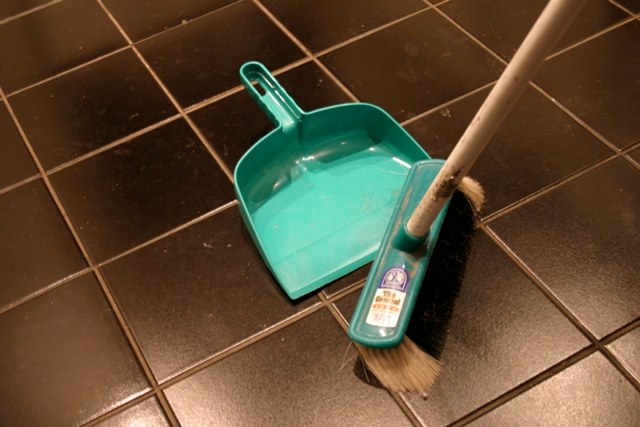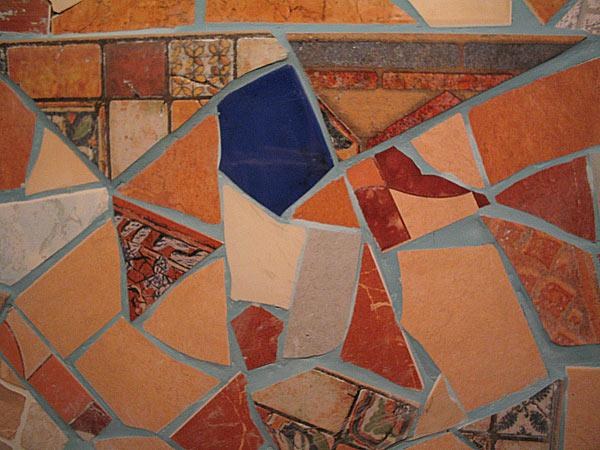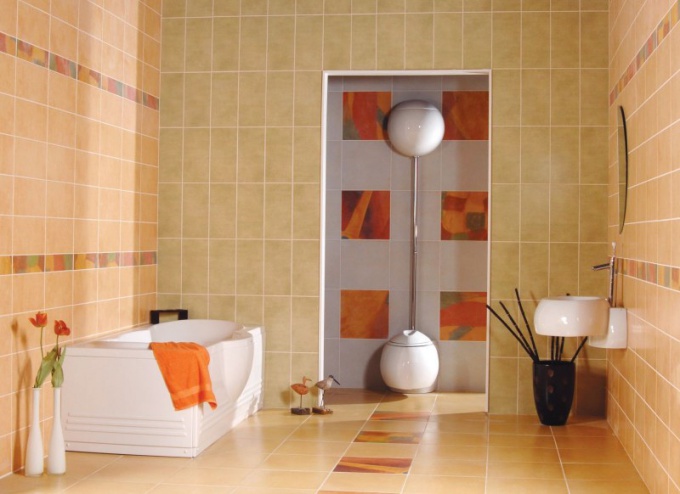Tip 1: How to lay out the tile diagonally
Tip 1: How to lay out the tile diagonally
The tile laid on the diagonal looks very original and beautiful. If you do all the work correctly, then the floor in the room can even be turned into a magnificent interior decoration.

Instructions
1
Buy the necessary amount of tiles, as well asmanual tile cutting machine. The difficulty in laying tiles diagonally is that tiles are required more than using other methods of laying. Prepare for the fact that you will have a lot of pruning, so if you do not buy enough tiles, then materials for finishing the floor just will not be enough. To find out the optimal amount of tile, calculate the area of the room, and then the area of each tile. Please note: you need to measure in meters. Those. if the size of the tiles is 30x30 cm, then the area will be 0.09 m. Divide the area of the room by the area of the tile, add 15% of the stock to the diagonal stitch to the number obtained, and then round it up. So you get the number of tiles you need to buy.
2
Carry out the preparatory work. Align and carefully primed the surface of the floor, prepare the glue. Carefully inspect the floor before you start laying the tiles. If in the process of laying on the surface of the floor irregularities and other defects are found, then it will be much harder to correct them.
3
Make the markup. Do not rush: the more time you spend on this stage, the more likely that the tile will be laid out exactly, and the work does not have to be re-done. Begin marking the floor from the center of the room. To make sure that it is done correctly, dry a few rows of tiles.
4
Pay attention to how the tiles adjointo each other and to the walls. The most visible parts of the room should be given special attention. If you do not work very well in the corner where the refrigerator will stand, nothing terrible will happen, however, in the easily visible corners, the floor finish should be immaculate.
5
Lay out one row of tiles using glue. Between the last tiles stretch and fasten the rope: so you can check with the diagonal in the process of work. After making sure that the first row is laid out correctly, proceed to laying the next rows. Lay out only the whole tile, and leave the pruning for later.
6
When the glue dries, and on the floor it will be possibleWalking, not afraid to damage the finish, proceed to laying the pruning. Align them if necessary, make sure that they fit snugly against the walls. When you are finished, remove the glue residues from the floor surface and carefully work the seams.
Tip 2: How to properly tile: installation methods
Tile is a popular finishing material. For its installation, it is not necessary to invite specialists: if you have knowledge of the ways of laying the tile, work on facing the premises can be done independently.

If the room needs to lay out the floor and walls with tiles, begin by laying the floor tiles. But in any case, the surface must be prepared.
Preparation for the installation of tiles
The first thing to do is to levelsurface of walls or floor and eliminate its defects. Fixation of cracks is carried out by shpatlevaniya using a cement-sand mortar. The floor can be leveled with the help of ready mixes - a self-leveling screed. This method is more preferable, since it does not require long and time-consuming work to smooth the concrete. The walls can either be plastered or leveled with gypsum board. Any surface on which the tile will be laid, regardless of the material it is made of, is required to be covered with a layer of primer. If the tiles will be installed in a room with high humidity (bathrooms, kitchens, bathrooms), you need to buy a primer with a water repellent property.Methods of installing tiles
To fix the tile you can use a tileGlue or waterproof mastic type "Garant" or "Garant +". To work, you need a container for glue, a spatula with a metal spatula, a rubber spatula, a tape measure, a building level, a pencil, crosses for laying tiles. If the tiles are of different colors or textures, and should make up a pattern, it is recommended to draw a sheet of paper in advance and display the required color scheme on it. There are several ways to install the tiles: seam in the seam, in a descent, diagonally, figured masonry. The simplest is the first method. Its advantage lies in the small amount of waste, as it is rare to cut tiles. The peculiarity of laying diagonally is that each tile should be cut diagonally, which increases the laboriousness of the finishing process. In addition, a large amount of waste remains. Therefore, this method can not be called economical. The method of laying "in the runaway" is the installation of tiles with displacement. It requires accuracy of calculations and proper marking of the wall.Technology of laying tiles in the manner of "seam in the seam"
The beginning of the work is the installation of lighthouses. This is a very important process, since the evenness of the entire masonry depends on it. At the bottom of the wall, a thin thin rail is fastened to the level. It will serve as a support for the lower row of tiles. If the finishing coat is subsequently laid on the floor, it should be taken into account and the rack raised to the required height. Then you need to prepare the glue. To do this, either dilute in accordance with the instructions dry mix, or use fast-hardening mastic. Next to the workplace put a container of water, which will have to soak for a few minutes tile. The sticker of the tile is made as follows: on the back side of the tile apply a thin layer of glue, level it over the entire surface of the tile, and press it against the wall so that it rests on the beacon rack. When the tile is firmly fixed on the wall, take special crosses that determine the thickness of the seam, and lay them on the upper corners of the tile. Then the next one is glued in the same way.Tip 3: Installing floor tiles with your own hands
Laying floor tiles is one of those types of repair that you can do yourself, without recourse to specialists.

For laying floor tiles we will need:- floor tiles in the right amount (calculated on the basis of the floor area plus a stock of 1.5 meters), - plinth, - tile cutter or grinder with a disc for cutting tiles, - tile glue, - grout for grouting joints, - remote plastic crosses, - tank for glue, - notched trowel, - rubber spatula, - rags, - hammer and chisel (for churning unevennesses), - level, - strong thread, - a bit of plasticine. The most important stage preceding the laying of floor tiles is the preparation of the floor surface. Naturally, all furniture must be removed, the old tiles - removed from the floor. The simplest and least labor-consuming variant of floor leveling is a cement screed. However, this type of work should be carried out only if the evenness of the floor causes too much suspicion. If the differences in height do not exceed a few millimeters, you can close your eyes on them, as they are smoothed with tile glue. Certain protrusions can be knocked down with a chisel and a hammer, and on grooves with a diameter of not more than 10 cm, one can not focus attention. The floor must be clean and free of dust and dirt before laying the floor tiles. It can also be pre-primed. Next, you need to mark out the floor for laying the floor tiles. To do this, you can take the floor tiles themselves and lay one row along and one - across the room. In this case, it is recommended to spread the tile not immediately close to the wall, but so that there is a small gap along the walls, that is, to make a gap. This is done in order to hide the possible unevenness of the walls, which can be seen when laying the tiles closely. If possible, the gaps around the perimeter should be the same. These gaps are subsequently filled with fragments of tiles. After laying and leveling two rows of tiles, you can pull two strands (along and across the room) respectively, fixing them to the walls with the help of plasticine or in another way. In the case where the walls or corners of the room are very uneven, the floor tiles can be laid diagonally. At the same time, the process of laying the tiles will be almost identical to the technology of laying floor tiles in the usual way. The only thing that is different is filling the gaps around the walls (more labor to cut out the necessary fragments). After marking the floor, you can mix the glue and start laying the floor tiles. The adhesive is applied with a notched trowel on either the tile itself or on the floor. The teeth on the spatula are needed in order to accurately measure the right amount of glue. The first floor tile is laid along the joint of the longitudinal and transverse threads and is slightly pressed down. The next tiles are stacked respectively in a row with the first, and so on until the end of the room. Between the adjacent tiles in the seams you need to insert plastic remote crosses. In this case, you can put them directly into the glue in the joint of four tiles or put vertically two pieces between the tiles. In the second case, after drying the glue, the cross should be removed. Crosses ensure the evenness of the seams and, accordingly, the entire masonry of the floor tiles. Horizontal flatness of the laying of floor tiles must be constantly checked by level and visually. If one tile is recessed in relation to the neighboring tiles, it must be carefully removed, add more glue and put it in its place. The final stage is filling the gaps around the perimeter of the room. If a Bulgarian is used, the respiratory organs should be protected from the ingress of ceramic dust. Tiles are cut with such a calculation that between it and the wall there is a small gap of 2-3 mm. Here you also need to use crosses on the above technology. After laying all the tiles and drying the glue sticking out the cross should be removed, and the seams between the tiles filled with fugue. Fugue is rubbed into the intertight seams using a rubber spatula, and its remnants are easily removed with a damp rag. After the fugue dries around the perimeter of the room, a plinth is installed, which is fixed to the walls and gives the floor a complete look.







